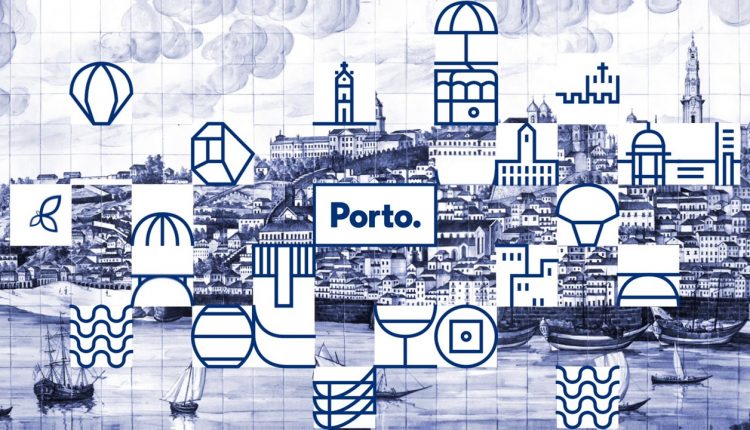The Identity of the City
Cities were formed as an expression of spiritual, material, social and political conditions. The changes in these conditions from one city to another make each one a unique unrepeatable phenomenon. Since the city is a humanitarian institution, it is in a constant state of change, as the communities and their circumstances are changing through time. Cities reflect as well as shape their inhabitants’ values and outlooks in various ways. Each of these changes constitutes a time layer represented by a material reality in the physical structure of the city.
Each layer is supposed to be built on the top of the previous layer, enrich and add to it, not abolish and erase it. This turns the city into a group of nested and accumulated loops that are difficult to disband, and broadcast the sense of time intensively to us. The city is a cumulative reality in space and time. Understanding these layers and their relationship to each other is a crucial factor in understanding the city and sensing its identity. Problems start when something goes wrong in this temporal, spatial structure of the city and the distorted situation becomes the prevailing, which causes loss of the city properties and adversely affect its identity and could lead to losing it. This is experienced by the Arab cities as they began to lose their historic stockpiles, and many parts of their old centres faded spiritually and materially. Distinguishing characteristics of these cities became absent and mysterious because of several attempts to save those old parts in a materialistic way like a museum without paying attention to the time track of its formation. Accordingly, the design is oriented towards creating a monotonous standard “any place” image rather than enhancing a sense of heritage and tradition.
This led to the loss of the urban environment and its ability to deliver a sense of viewing, and it fell into a circle of chaos. This brings us to inquire whether there is still a real presence to the Arab identity of the city, as it was pre-existing, under the urban pressures that are facing the contemporary Arab cities.
In other words, the image is not only a physical or visual element, but is also a mental analysis of all the components of the city, which reflects the way we use and access our cities. In order to get an image, we would usually need a scene, a camera, and a processing of the image. By projecting these concepts on the city, we find that the scene is the physical and social urban environment of the city, and the camera is the people and the users of this environment, and the process of taking a picture is to live in the city, while the production and processing of the image is the mental process of formation the impressions and mechanisms of interaction and overlap with this environment. This is stored in the users’ memories and is different from one to another, whereas identity is to recognize what is the reality of something and cannot vary from one person to another as it is determined by the identified object itself and the characteristics it owns, and is not based on a personal impression. “Urban identity is the whole qualifications, which allows urban areas to be the city and distinct it from other cities. This cannot be exported outside the city limits, therefore cannot be realized without the experience of living in the city.
Although it is impossible for someone who has never lived in a city to accommodate its identity but he can have a mental perception of it, and link it to one of its symbols in a simple way. For example, when I think about Damascus, I do not think about the Umayyad mosque or the old Damascene houses. Damascus for me is that place where I never feel thirsty as there is a public water tab in each corner, the children who play football in those narrow streets, the smell of jasmine and wet soil and wood in a narrow alley shaded with houses lying on each other. Whereas a foreigner would probably buy souvenirs with visual symbols of Damascus and consider them representative of its identity. This doesn’t mean that the identity is something not related to the image, symbols, and impression of the city, on the contrary, they are the primary factors in understanding and feeling the urban identity.
The identity of Arab cities:
I clarified the concept of city’s identity, and the different elements and factors that shape it through time. I spoke about the Collective identity and national identity. In this part, I will clarify the collective identity of Arab cities in general.
When we talk about the concept of the Arab city, theoretically, we are talking about 24 countries comprising hundreds of cities that share a number of traits and general features. The question here is, does the word Arab has the capacity to represent a collective urban identity of these cities? Are there for real what are called Arab cities, or there are only different, scattered and dispersant cities that have nothing in common?
Most of the people will say that the concept of Arab cities does exist, and that these cities have similar geographical, cultural, religious, and social characteristics which give them a collective identity. In fact, these common characteristics had been spread in what is known now as the Arab world at the hands of Muslims, where the Arabic language was also spread by Muslims. Before the Islamic empire, there were different civilizations with different physical, psychological, moral and the social qualities, where the identity of Egyptian civilizations differed greatly from those of Levant and Mesopotamia. Therefore, the word Islamic is more capable of giving a collective identity to these cities but alone would not be true. The right collective identification to the reality of this group of cities is “Islamic Arab cities”, as we have many other cities where Islam is the main religion but Arab cultural inventory, stemmed from the Arabic language and its speakers, was not inherited to these cities, and only spiritual values of the Islamic religion were spread. We must note that, some of the Islamic Arab cities have older cultural and architectural legacy than the Islamic one but, unfortunately, most of them totally lost it after the Islamic spread or still only have some monuments in a physical architectural style without any spiritual value. This era was the start of losing national identities of the cities in favour of the collective Islamic Arab identity and led to a weakness and loss of the identity that the cities show nowadays. “The city continues its existence carrying the traces of each period because of the changing society culture in time as well as it is an expression of a historical accumulation.
Arab-Islamic city urban standards:
Some orientalists claimed that, the Arab-Islamic cities did not depend on an urban basis or standards, but they were rather random cities, where the only effect of the Islamic religion was in the designing of residential houses that are closed to the outside and open to inside spaces. In fact, the Arab-Islamic cities have unique characteristics that differ from the western cities. “Historic Arab common set of social, geographic, and religious factors leading to similar morphological principles
developing the urban fabric,” where the streets and roads have a big importance in terms of classifications and the organic relation with the surrounding traditional urbanism, and that is also different from the concept of roads in the modern city planning.
The identity of city is one of the topics that will be discussed in the international conference on “Cities’ Identity Through Architecture and Arts – 3rd Edition” by IEREK.
To know more: https://www.ierek.com/events/cities-identity-through-architecture-and-arts-3rd-edition#introduction



